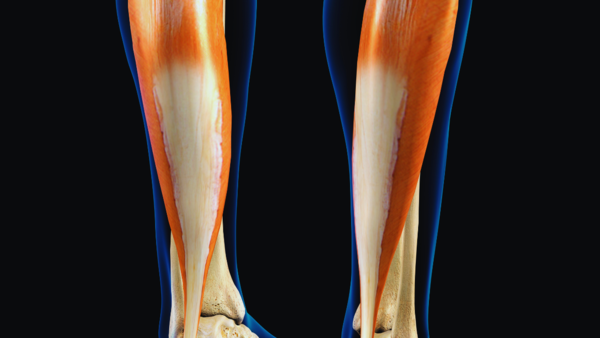Imagine lowering your blood sugar levels by up to 52% with a simple leg movement you can do while sitting. Recent research suggests that calf raises, performed rhythmically while seated, can significantly impact your blood sugar. This low-effort activity involves lifting your heels while keeping the balls of your feet on the floor, engaging your calf muscles.
Health experts emphasize that these movements activate the soleus muscle, a key player in regulating blood sugar within the body.
What makes this technique particularly appealing is its accessibility. It requires minimal effort, no specialized equipment, and can be performed even while seated. Individuals with limited mobility or those leading sedentary lifestyles can easily incorporate this exercise into their daily routines.
For individuals with consistently elevated blood sugar levels or those in prediabetic stages, integrating such movements during extended periods of sitting – whether watching television, working at a desk, or even traveling in a car – could yield significant improvements over time.

A peer-reviewed study published in the National Library of Medicine highlights the potential of the soleus pushup (SPU), a simple seated calf raise, to boost local oxidative metabolism and enhance blood sugar control. Unlike most muscles that fatigue quickly, the soleus muscle is metabolically designed for efficient, sustained activity. The study revealed that this movement increases glucose uptake without depleting glycogen stores, making it an effective strategy for managing postprandial blood sugar spikes.

The soleus muscle, often overshadowed by larger leg muscles like the quadriceps, is a metabolic powerhouse. A recent study published in iScience and hosted by the National Institutes of Health (NIH) describes the soleus as capable of sustaining low-intensity contractions for extended periods without fatigue. This allows it to support glucose and lipid regulation over prolonged durations.
The study coined the term "soleus pushup" (SPU) to describe this seated movement and demonstrated that it boosts oxidative metabolism more effectively than standing or walking. Researchers observed an average reduction of 52% in blood glucose and a 60% reduction in insulin levels when the SPU was performed during prolonged sedentary periods.
No special equipment, standing, or gym membership is required. Simply perform soleus pushups while seated, slowly lifting your heels up and down, to improve blood glucose and fat metabolism throughout the day. Researchers emphasized the benefits of this exercise even during prolonged sitting, such as while working in an office or watching television.
For individuals with prediabetes, Type 2 diabetes, or sedentary lifestyles, this simple movement could be a low-effort, high-impact addition to their daily routines. Study participants demonstrated glucose reductions of up to 52% in some cases when consistently using the soleus pushup method.
While not a replacement for healthy eating, medication, or regular physical activity, experts suggest that soleus activation can complement existing glucose control strategies. Consider it a biological shortcut that works silently while you sit.
Newer articles
Older articles
 The 'Good Cop, Bad Cop' Parenting Strategy: Does It Do More Harm Than Good?
The 'Good Cop, Bad Cop' Parenting Strategy: Does It Do More Harm Than Good?
 5 Natural Ways to Strengthen Your Heart and Reduce Disease Risk
5 Natural Ways to Strengthen Your Heart and Reduce Disease Risk
 Broadside: Broad Slams India's Team Choices After Headingley Test, Calls for Edgbaston XI Changes
Broadside: Broad Slams India's Team Choices After Headingley Test, Calls for Edgbaston XI Changes
 Wimbledon Serves Up India: Tennis Giant Courts Cricket-Crazy Nation for Growth
Wimbledon Serves Up India: Tennis Giant Courts Cricket-Crazy Nation for Growth
 England's Ben Duckett: The New Virender Sehwag? Former Coach Draws Bold Comparison
England's Ben Duckett: The New Virender Sehwag? Former Coach Draws Bold Comparison
 Archer Set for England Return? Broad and Buttler Advocate for Pacer's Second Test Inclusion
Archer Set for England Return? Broad and Buttler Advocate for Pacer's Second Test Inclusion
 Ashada Gupt Navratri 2025: Unveiling Dates, Timings, and Esoteric Significance
Ashada Gupt Navratri 2025: Unveiling Dates, Timings, and Esoteric Significance
 Suryakumar Yadav's Sports Hernia Surgery: What It Is, Who's at Risk, and Path to Recovery
Suryakumar Yadav's Sports Hernia Surgery: What It Is, Who's at Risk, and Path to Recovery
 The Evil Eye: Protective Charm or Portal to Darkness? Exploring the Symbol's Dual Interpretations
The Evil Eye: Protective Charm or Portal to Darkness? Exploring the Symbol's Dual Interpretations
 Jaiswal Eyes Gavaskar's 49-Year Record: India's Opener Nears Milestone 2,000 Test Runs in Edgbaston Clash
Jaiswal Eyes Gavaskar's 49-Year Record: India's Opener Nears Milestone 2,000 Test Runs in Edgbaston Clash